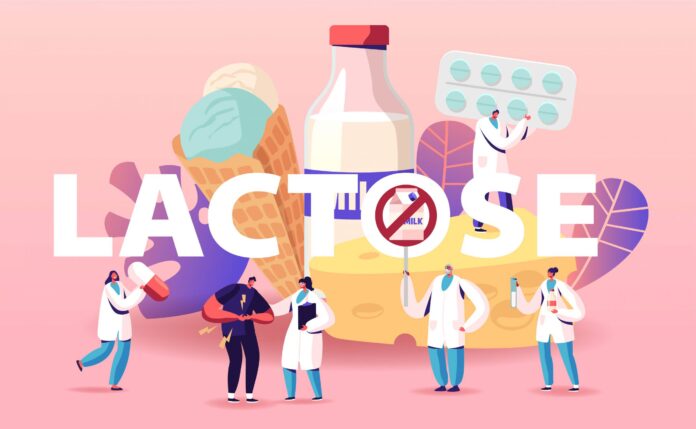Lactose intolerance is the condition in which the person is unable to break down the natural sugar known as lactose. Lactose is ordinarily found in dairy items, like milk and yogurt. You become intolerant to lactose when your small digestive system quits making enough of the compound lactase to process and separate the lactose. At the point when this occurs, the undigested lactose moves into the digestive organ.
DIAGNOSIS
Your doctor may presume lactose intolerance in view of your manifestations and your reaction to diminishing the amount of dairy food sources in your eating routine. Your PCP can affirm the finding by directing at least one of the accompanying tests:
Hydrogen breathing test: After you drink a fluid that contains significant degrees of lactose, the doctor estimates how much hydrogen is there in your breath at ordinary spans. Breathing out a lot of hydrogen demonstrates that you’re not completely processing and retaining lactose.

Lactose resistance test: Two hours in the wake of drinking a fluid that contains significant degrees of lactose, you’ll go through blood tests to gauge how much glucose in your circulation system. If your glucose level doesn’t rise in the food intolerance test, it implies your body isn’t absorbing or digesting lactose.
HOW CAN YOU TREAT LACTOSE INTOLERANCE?
Lactose intolerance can be handled in a simple manner. The objective of treatment is to control side effects through dietary changes. Individuals with this condition can generally find a degree of lactose-containing food sources that won’t create symptoms.
You can learn through experimentation what quantity and sort of lactose-containing items you can endure or you can briefly wipe out all such food sources from your typical eating regimen utilizing a Lactose-Free Diet, then, at that point, step by step add them back to track down your degree of resistance and solace.
For experimentation, cut down the portions of your typical dairy food products and replace them with dairy items that are free from lactose, or polishing off milk and dairy items with dinners since lactose might be better endured when eaten with different food items. Further, you might see better resistance of specific dairy food varieties that contain lower measures of lactose, for example, cheddar, curd, and yogurt.
TO SUM UP

Lactose intolerance is exceptionally normal, influencing up to 70% of individuals around the world. The most widely recognized side effects incorporate stomach torment, swelling, constipation, gas, sickness and vomiting. There have been reports of different indications, like migraines, tiredness, and dermatitis, however these are more extraordinary and not grounded. In some cases individuals erroneously attribute side effects of a milk allergy, like dermatitis, to lactose intolerance.
If you have such symptoms, a hydrogen breathing test might assist with deciding if you have lactose malabsorption or your indications are brought about by something different. Treatment includes decreasing or eliminating wellsprings of lactose from your eating routine, including milk, cream and frozen yogurt. However, normally you can have up to one cup of milk without worrying about these symptoms.




